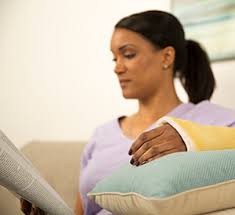Pain after Carpal Tunnel Surgery
Table of Contents
- 2 Types of pain after carpal tunnel surgery
- Incisional pain
- Pillar pain
- Numbness & tingling after carpal tunnel surgery
- Pain from infection
- Pain from nerve injury
- Pain after carpal tunnel surgery due to surgical failure
- Summary
- FAQs
- About
Patients considering a hand operation often want to know about the
level of pain after carpal tunnel surgery. In fact, I believe this is the
most common question I get about
carpal tunnel release surgery.
I always reply,
“Yes, there's pain. But there are different
kinds of pain.”
Specifically, there are 2 types of pain that usually
result from surgery. Both are normal pain after having carpal tunnel release surgery. Therefore, any pain that feels different from these 2 types may indicate something else is wrong.
2 Types of pain after carpal tunnel surgery
Immediate pain after carpal tunnel surgery is perfectly normal - and expected. The pain's intensity usually is related to the type of surgery you have:
But regardless of which type of surgery you have,
pain will happen. And it will be most intense within the first week. This is a normal outcome of both surgery types.
Most of your
recovery and
aftercare will revolve around managing the pain. In general, you'll experience 2 types of pain after either carpal tunnel surgery. Again, both are perfectly normal. Namely, they're referred to as:
- Incisional pain
- Pillar pain
• Incisional pain
Incisional pain is the pain right on the cut site. This usually lasts for 3-10 days after surgery. But you can make incisional pain hurt less by:
- taking
pain medicines
- avoiding any
gripping action
- limiting lifting objects
- making fewer forceful hand movements
- elevating your hand as much as possible
• Pillar pain
Pillar pain is felt in the thicker, fleshy sides of the cut. That’s where the
transverse carpal ligament (the tissue which the surgeon cut) was attached to the wrist bones. And since muscles are also disturbed there, their disruption contributes to the pain.
It may take 2-6 months for normal pillar pain to resolve. In fact, how much pillar pain you have is one of the key factors affecting your
recovery time. If pillar pain is excessive then it's considered a
complication of carpal tunnel surgery.
You can treat pillar pain very effectively with:
- pain medicines
- rest with your hand elevated
- wrist massage
- physical therapy
Pillar pain diminishes much
slower than incisional pain. So be patient. You might not notice a day-to-day change. But you will see differences from one week to the next.
Numbness & tingling after carpal tunnel surgery
If the surgery was successful, the
pain
you felt as a
symptom of carpal tunnel syndrome should diminish. But numbness or tingling may persist. This is usually due to one of two reasons.
- First, the surgeon did not fully cut the ligament. That means the
median nerve
is still compressed. This happens mostly with
endoscopic surgery.
- Second, other tissues are pushing on the median nerve, so cutting the ligament didn’t matter. This can be a bigger problem, leading to nerve damage. That means
numbness
or tingling will never completely disappear.
Pain from infection
You may get an
infection after carpal tunnel surgery, buy it's not very common. To avoid infection, be sure to take care of the wound as outlined in your
post-operative instructions. First and foremost, the instructions recommend keeping the bandages clean and dry. This is especially important in the
first week after surgery.
If an infection is causing pain after carpal tunnel surgery, the doctor will give you
antibiotics. If the infection is especially bad, you might need another surgery to clean the infection from around the wound site.
Pain from nerve injury
Another uncommon complication of hand surgery is
median nerve damage. It occurs more often with endoscopic carpal tunnel release surgery. Most times this pain goes away in 1-3 months. However, feelings like numbness, itching or burning may take its place. And those feelings can last years
- or be permanent.
The typical nerve injury occurs to one of two smaller nerve branches in the hand. One controls the thumb muscles. The other carries sensations from the palm of the hand. Accidentally cutting or nicking a branch of the nerve causes a disturbance in the area the nerve controls.
Pain after carpal tunnel surgery due to surgical failure
Sometimes carpal tunnel pain never totally disappears after surgery. And sometimes it goes away but then comes back again in a few weeks or months.
If you had carpal tunnel release surgery but still feel symptoms, you might be in this unlucky group. It’s not unusual to see patients where the surgery didn’t live up to its promises.
Carpal tunnel doctors consider that a
failed surgery.
Failed surgeries happen about
50% of the time - that's if you measure "patient satisfaction". If a surgery fails, the doctor may recommend another,
second carpal tunnel release surgery (called "revision surgery"). But the chances of success after a revision surgery is
only 10-59%. Many reports put the
failure rate at 80%.
When a carpal tunnel surgery fails, most times the patient simply lives (and copes) with the remaining symptoms. This also includes coping with the physical, emotional, and financial
scar of having a failed surgery.
The
American Academy of Orthopedic Surgeons reports that over 500,000 carpal tunnel surgeries are performed each year. The
Bureau of Labor Statistics and the
National Institute for Occupational Safety & Health have another statistic. They say for those who had
carpal tunnel release surgery, only
20-24% returned to their former job after surgery. Bleak statistics indeed.
Summary
Pain after carpal tunnel surgery is common. In fact, almost all patients experience some degree of pain in their first few days. But persistent pain for several days to weeks is abnormal. You should contact your doctor if this happens.
FAQs
Is it possible to have incisional pain and pillar pain at the same time?
Yes, in fact, this is common.
Which type of pain hurts more?
Pillar pain is considered more painful and more difficult to treat.
Am I guaranteed to have pain after carpal tunnel surgery?
Yes, but the amount of pain and its duration vary from person to person.
About







